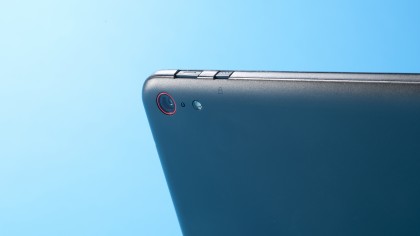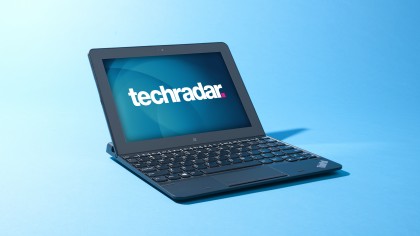TechRadar Verdict
Snappy performance and a host of accessories allow the ThinkPad 10 to go places most tablets can't.
Pros
- +
Excellent FHD+ display
- +
Snappy performance
- +
Responsive keyboard cover
Cons
- -
Ultrabook Keyboard is flawed
- -
Pricey when fully loaded
- -
No 802.11ac support
Why you can trust TechRadar
TechRadar received its first look at Lenovo's ThinkPad 10 back in May, and we were intrigued. This full-fat Windows 8.1 tablet comes loaded with a 1920 x 1200 touch screen, Intel's new Atom Z3795 quad-core system on a chip (SoC), and a host of optional accessories that make this device an ideal candidate for mobile workers.
This sentiment runs counter to Apple's notion of the tablet's role in our lives, but I would venture to say that the tablet fantasy for many of us is a device that completely replaces our laptop, and possibly (for non-gamers particularly) even the desktop. The notion of carrying one device around that I can plug into different set-ups and also use as a dedicated tablet embodies the very ethos fueling the tablet craze.
After two straight weeks using the ThinkPad 10 as my primary mobile device, I am growing optimistic that the fantasy will not be a pipe dream for much longer. It is not perfect, but Lenovo's newest tablet is more than capable of serving as a dedicated, singular device for worker drones like myself.

In fact, when viewed as a referendum on Windows' potential to catch up to Android and Apple, systems like this may revive hope in Microsoft's fan base. Enough set up. Let's jump into the review.
A truly convertible tablet
The first thing you'll notice about the ThinkPad 10 is that it looks like most non-iPad tablets. It is slim and lightweight, and possesses a glossy Gorilla Glass frontside and a smooth, matte-finish backside – complete with the familiar ThinkPad logo; the glowing dot on top of the "i" included. Like all Windows tablets, there's a bit too much bezel around the device, particularly in light of the iPad Air. ThinkPad faithful may find themselves longing for that familiar rubberized surface that lines so many other devices in this brand, but it is nowhere to be found here.
The most striking aspect of this device however, is the sturdy, bright and colorful 10.1-inch, IPS touch display. The power button sits on the top-right corner of the unit when it is in landscape mode. Next to this sits a rotate lock, and the volume rocker is found on the right-hand side of the tablet.

Also noteworthy: the ThinkPad 10 comes kitted out with an impressive compliment of accessories, including a keyboard, a desktop dock, and a cover for the tablet itself. We'll take a closer look at these peripherals later, but the keyboard and the dock are particularly interesting because of the enhanced mobile and desktop modes they enable.
Perhaps the most important attribute of this system, however, is its size and weight. Not surprisingly, the slate itself is the same size as most other tablets. But when paired with the optional keyboard accessory, it doubles in thickness, roughly to the size of a slim Ultrabook. Even better, it weighs in at just under 1.5 pounds.
One final note: unlike Lenovo's Yoga and Flex lines, the ThinkPad 10 is a dedicated tablet first, and simply mounts onto a keyboard. As such, it lacks the flexibility and the variable screen positions that these other two Lenovo laptop hybrid lines possess.
